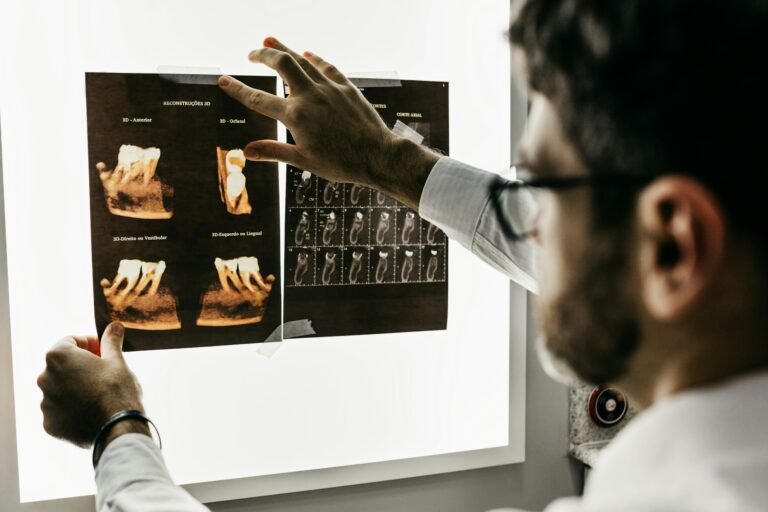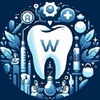Introduction:
Dental examinations are crucial for maintaining oral health and preventing dental issues. Dentists employ various approaches during these examinations to assess the condition of teeth, gums, and overall oral health. Understanding these approaches can help individuals prepare for their dental check-ups and comprehend the importance of regular dental visits.
-
Traditional Visual Examination:
- One of the most common approaches to dental examination is the traditional visual inspection. Dentists visually assess the condition of teeth, gums, tongue, and other oral tissues for any signs of decay, gum disease, or abnormalities.
- Dentists use dental mirrors and probes to examine hard-to-reach areas and detect any plaque buildup or cavities.
- This approach allows dentists to identify visible issues and determine the need for further diagnostic procedures or treatments.

-
X-ray Imaging:
- X-ray imaging plays a vital role in dental examinations by providing detailed images of teeth, jawbone, and surrounding structures.
- Dentists use intraoral and extraoral X-rays to detect hidden dental problems such as cavities between teeth, impacted wisdom teeth, or bone loss due to gum disease.
- X-rays help dentists formulate accurate treatment plans and diagnose issues that may not be visible during a visual examination alone.

-
Periodontal Evaluation:
-
- Periodontal evaluation focuses on assessing the health of gums and supporting structures of the teeth.
- Dentists use periodontal probes to measure the depth of gum pockets around teeth, which indicates the presence of gum disease.
- This evaluation helps dentists identify early signs of gum disease, such as gingivitis, and recommend appropriate treatment to prevent further progression.
-
Digital Imaging Technology:
- Advancements in dental technology have led to the adoption of digital imaging systems for dental examinations.
- Digital intraoral cameras allow dentists to capture high-resolution images of teeth and oral tissues in real-time.
- Patients can view these images on a monitor, enabling them to understand their oral health condition better and make informed decisions about treatment options.
-
Comprehensive Oral Health Assessment:
- A comprehensive oral health assessment involves a holistic evaluation of a patient's oral health status, including risk factors, medical history, and lifestyle habits.
- Dentists may conduct oral cancer screenings during this assessment to detect any suspicious lesions or abnormalities in the oral cavity.
- This approach enables dentists to tailor preventive strategies and treatment plans according to individual patient needs, promoting long-term oral health.
Conclusion:
Dental examinations encompass a range of approaches aimed at assessing and maintaining oral health. From traditional visual inspections to advanced imaging techniques, dentists employ various methods to ensure thorough evaluation and accurate diagnosis of dental issues. Understanding these approaches can help individuals prioritize regular dental check-ups and take proactive steps towards maintaining optimal oral health.
How Much Is a Dental Check-Up?
Introduction:
Cost is often a significant consideration for individuals seeking dental care. Understanding the factors that influence the cost of a dental check-up can help patients make informed decisions about their oral health and budget for preventive care appropriately.
-
Basic Dental Examination:
- The cost of a dental check-up typically includes a basic examination by the dentist. This examination involves visual inspection of teeth, gums, and oral tissues to assess overall oral health.
- The fee for a basic dental examination may vary depending on the dentist's location, experience, and the complexity of the examination.
-
X-ray Imaging:
- X-ray imaging is a common component of dental check-ups, especially for new patients or those with specific dental concerns.
- The cost of X-rays may be included in the overall price of the dental check-up or billed separately, depending on the dental practice's pricing structure.
-
Additional Diagnostic Procedures:
- If the dentist identifies any potential issues during the examination, additional diagnostic procedures such as periodontal evaluation or oral cancer screening may be recommended.
- The cost of these additional procedures varies and may be covered by dental insurance depending on the individual's plan.
-
Professional Cleaning:
-
- Many dental check-ups include professional cleaning, also known as prophylaxis, to remove plaque and tartar buildup from the teeth.
- The cost of professional cleaning may be bundled with the overall price of the dental check-up or charged separately.
-
Dental Insurance Coverage:
- Dental insurance coverage can significantly impact the out-of-pocket cost of a dental check-up.
- Patients with dental insurance may have all or a portion of the check-up cost covered, depending on their insurance plan's coverage for preventive care services.
Conclusion:
The cost of a dental check-up can vary depending on various factors, including the services included, the dentist's pricing structure, and insurance coverage. While the cost may seem daunting, investing in regular dental check-ups is essential for maintaining oral health and preventing costly dental issues in the long run.
Introduction:
Tooth extraction is a common dental procedure performed for various reasons, including severe decay, infection, crowding, or trauma. One of the primary concerns individuals have about tooth extraction is whether the procedure will be painful. Understanding the process and pain management options can alleviate fears and help individuals prepare for a tooth extraction procedure.
-
Local Anesthesia:
- Prior to tooth extraction, the dentist administers local anesthesia to numb the tooth and surrounding tissues.
- Local anesthesia ensures that the patient does not feel pain during the extraction procedure, although they may feel pressure or movement.
-
Sedation Options:
- For individuals with dental anxiety or complex extraction cases, sedation options such as nitrous oxide (laughing gas), oral sedatives, or intravenous (IV) sedation may be offered.
- Sedation helps patients relax and may induce partial or complete memory loss of the procedure, further reducing anxiety.
-
Extraction Technique:
- Dentists use specialized instruments to gently loosen the tooth from its socket before extraction.
- Modern extraction techniques aim to minimize trauma to surrounding tissues, reducing post-operative discomfort.
-
Post-Extraction Care:
- Following tooth extraction, dentists provide instructions for post-operative care to promote healing and minimize discomfort.
- Patients may be advised to apply ice packs to reduce swelling, take over-the-counter pain relievers as directed, and avoid strenuous activities that could disrupt the healing process.
-
Individual Sensitivity:
- While tooth extraction is typically well-tolerated with proper anesthesia and pain management, individual sensitivity to pain may vary.
- Dentists prioritize patient comfort and can adjust pain management strategies based on individual needs and preferences.
Conclusion:
With advancements in anesthesia techniques and pain management options, tooth extraction is generally a well-tolerated procedure with minimal discomfort. By discussing concerns and preferences with their dentist, patients can ensure a comfortable experience and successful outcome following tooth extraction.

No comments yet